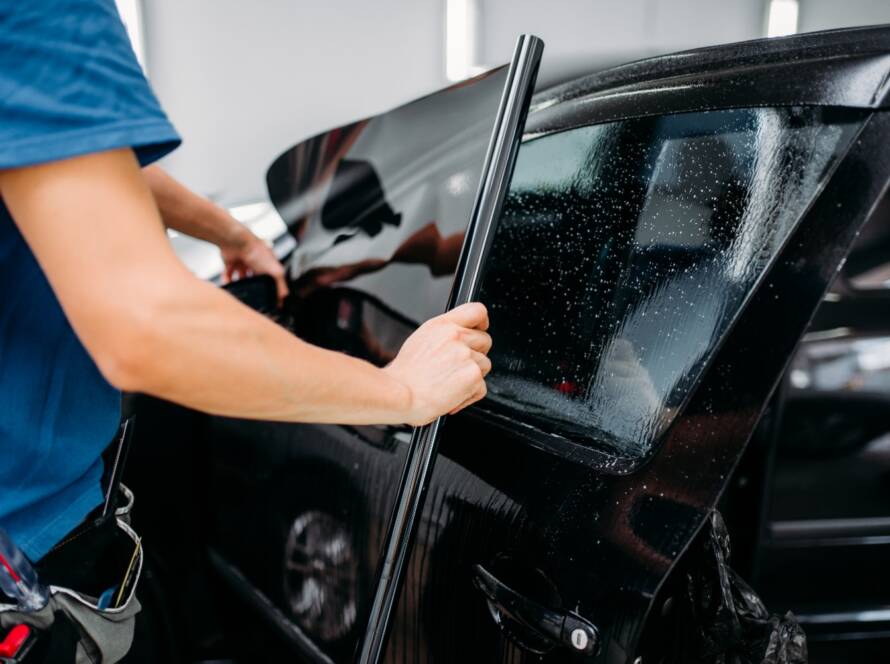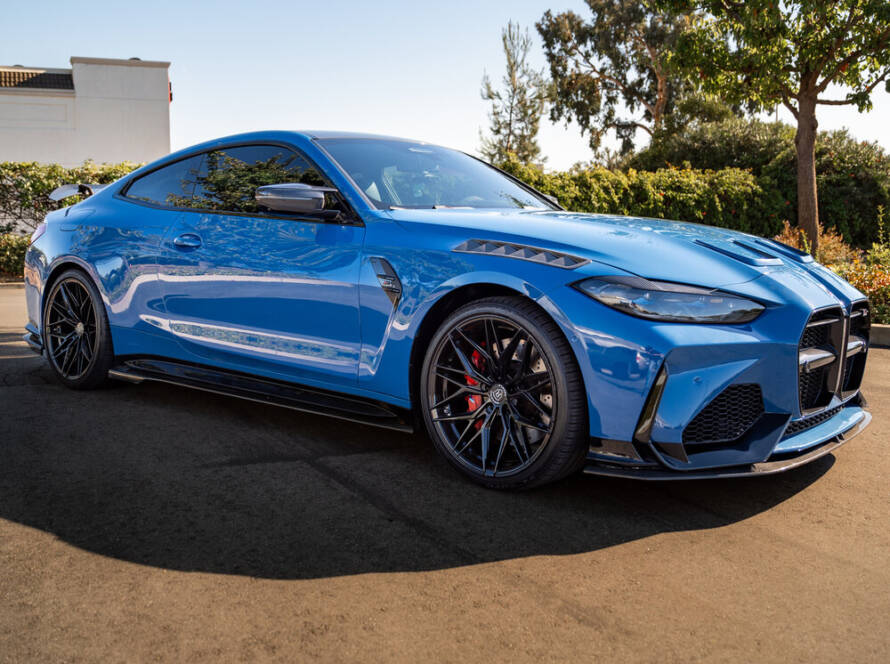Window tinting is more than just an aesthetic upgrade for your vehicle; it provides practical benefits like heat reduction, UV protection, and enhanced privacy. However, legal tint limits vary widely across state lines, and understanding these regulations is essential to avoid hefty fines, maintain road safety, and ensure compliance.
Whether you’re a car owner considering tinting your windows, an auto enthusiast exploring customization options, or a tinting professional staying updated, this guide will break down the legal tint limits by state for 2025.

What Are Legal Tint Limits?
Legal tint limits govern how dark or reflective your car windows can be. These regulations are measured by Visible Light Transmission (VLT), the percentage of light allowed to pass through your window. For example, a 35% VLT means 35% of light passes through while 65% is blocked.
Legal tint limits typically differ for the front windshield, front side windows, back side windows, and rear windshield. They also vary between passenger cars (like sedans and coupes) and multi-purpose vehicles (like SUVs and trucks).
Understanding these distinctions ensures your car remains road-legal while enjoying the benefits of window tinting.

Benefits of Window Tinting
Before we explore state-specific tinting laws, here are a few reasons why window tinting is a valuable investment for car owners:
- Reduces Heat:Blocks a significant amount of the sun’s heat, keeping your car cooler during the summer.
- UV Protection:Protects from harmful UV rays, which can damage your skin and fade your car’s interior.
- Enhanced Privacy:Darker tints protect your privacy, reducing visibility from outside the car.
- Shatter Protection:Some tints add a safety layer, holding shattered glass together in case of an accident.
- Improves Aesthetics:A sleek, well-applied tint enhances your vehicle’s look, giving it a polished and modern finish.
Check out: How Car Window Tinting Protects Your Interior from UV Damage
The Science Behind Window Tinting: How It Blocks Heat & UV Rays Preparing Polyvinyl Halide Products.”
Legal Tint Limits by State (2025 Overview)
Below is a general guide to window tinting laws in various states. Always check your local Department of Motor Vehicles (DMV) or state-specific regulations to ensure compliance as these laws can evolve.
1. Alabama
- Front Side Windows: Must allow more than 32% of light in.
- Rear Side Windows & Back Windshield: Any darkness is allowed.
- Windshield: Non-reflective tint above the manufacturer’s AS-1 line.
2. CALIFORNIA
- Front Side Windows: Must allow more than 70% of light in.
- Rear Side Windows & Back Windshield: Any darkness is allowed.
- Windshield: Non-reflective tint above the AS-1 line.
3. Florida
- Front Side Windows: 28% VLT or higher is required.
- Rear Side Windows & Back Windshield: 15% VLT for sedans and 6% for SUVs.
- Windshield: Must allow 70% of light above the AS-1 line.
4. New York
- Front Side Windows & Windshield: Must allow more than 70% of light in.
- Rear Side Windows & Back Windshield: 70% VLT for all vehicles.
5. Texas
- Front Side Windows: Must allow more than 25% of light in.
- Rear Side Windows & Back Windshield: Any darkness is allowed.
- Windshield: Non-reflective tint up to 5 inches.
6. Arizona
- Front Side Windows: 33% VLT or higher.
- Rear Side Windows & Back Windshield: Any darkness is allowed.
- Windshield: Non-reflective tint above the AS-1 line.
Pro Tip: States like Arizona and Texas allow darker tints on rear windows due to the intense sun exposure. This highlights how climate can influence legal tint limits.
7. New Mexico
- Front Side Windows: Must allow more than 20% of light in.
- Rear Side Windows & Back Windshield: Must allow more than 20% of light in.
- Windshield: Non-reflective tint above the AS-1 line.
8. Massachusetts
- Front Side Windows & Back Window: Must allow more than 35% of light in.
- Rear Windows & Windshield Tinting:** Restricted above 35% unless within AS-1 lines.
9. Michigan
- Front Side Windows & Windshield Tinting:** Restricted unless within AS-1 lines. Versatile
- Rear Side Windows & Back Windshield: Must allow more than 35% of light in.
10. Minnesota
- Front Side Windows: Must allow more than 50% of light in. Versatile
- Rear Side Windows & Back Windshield: Restricted above 20%.
Window tinting regulations vary by state, and it’s crucial to understand these rules before modifying your vehicle’s windows. Some states impose restrictions on how much light can pass through both the front and rear windows, while others focus only on specific areas, such as the front windshield or front side windows. These laws, known as window tint regulations, are designed to balance driver visibility and road safety.
For instance, many states allow darker tints on rear windows but enforce stricter limits on front windows to ensure clear visibility for law enforcement and other drivers. Failing to comply with these regulations can lead to fines or penalties, so it’s essential to research your local laws before applying any tint. By adhering to legal standards, you can enhance your vehicle’s style and privacy while staying safe and avoiding unnecessary complications.

How to Ensure Your Window Tinting is Legal
When it comes to window tinting, understanding the laws and guidelines in your area is crucial. Regulations can vary significantly depending on your location, and ensuring your tint complies with these rules is essential for both safety and legal reasons. This guide will help you navigate the key steps to verify that your window tinting aligns with local requirements.
1. Research Local Tinting Laws
Check your state or region’s specific window tinting regulations. Visit state websites or contact your local DMV for detailed guidelines on permissible tint levels.
2. Consult Professional Tinting Services
Professional tinting providers are familiar with local laws and can help you choose tint options that comply with legal standards.
3. Request Certification for Compliance
When getting your windows tinted, ask for documentation that confirms the film meets legal requirements. Keep this certification in your vehicle for inspections or traffic stops.
4. Inspect Pre-Owned Vehicles with Tints
If buying a used car with aftermarket tint, have the tint checked by a technician to ensure it adheres to current regulations. Laws may have changed, or previous installations might not meet standards.
5. Stay Informed and Prepared
By following these steps, you can enjoy the benefits of tinted windows while avoiding legal issues or penalties.
- Key Takeaways You Need to Know
Understand your local laws regarding window tints to ensure compliance and avoid fines. - Choose the right tint that balances style, comfort, and legal standards.
- Always use a professional installer for quality results and to meet regulatory requirements.
- Check the legality of tints on pre-owned vehicles before purchase to avoid unnecessary issues.
- Stay informed about regulations to enjoy the benefits of window tints without complications.
Protect your vehicle and elevate its style with professional tinting services from SFG Wraps. Our team ensures high-quality installations that adhere to local regulations, guaranteeing you a smooth, hassle-free experience.
Whether you’re tinting a new car or need an inspection for a pre-owned vehicle, we’ve got you covered. Reach out to us today to learn more about our services or to schedule your consultation!


